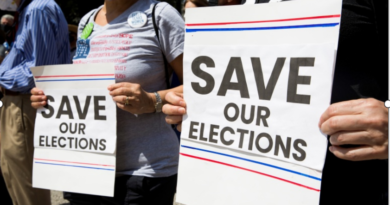Changing Race and Ethnicity Questions on the U.S. Census Form Reflect Evolving View

DATE February 19, 2020
AUTHOR Paola Scommegna
Population Bulletin, vol. 74, no. 1: America’s Changing Population
FOCUS AREAS
U.S. Census/American Community Survey World and U.S. Population Trends
Census questions about race and ethnicity have evolved over time, as have Americans’ views about racial and ethnic identification. Nearly a century ago, enumerators for the 1920 Census were instructed to identify people as “White,” “Black,” “Mulatto,” “Chinese,” “Japanese,” “American Indian,” “Filipino,” and “Hindu” (Asian Indian regardless of religion), or “Other.”1 Enumerators’ personal observations, rather than individuals’ self-identification, determined most racial/ethnic classification through the 1950 Census.
The Census Bureau emphasizes that current race categories “reflect a social definition of race … not an attempt to define race biologically, anthropologically, or genetically.”2 The 2020 Census questionnaire will ask respondents to identify their race and whether they are of Hispanic origin in two separate questions. A majority of U.S. Hispanics are Hispanic and white under the federal government’s definitions, but many Hispanics do not distinguish between race and ethnicity in this way.3 In 2010, 37 percent of Hispanics marked the “Some Other Race” category to express their racial identification—for example, Mexican or Salvadoran—which for them has more meaning than the race categories on the census form (such as white, black, Asian, etc.).
To improve the accuracy of census data, the Census Bureau staff tested a single question that combined the race and Hispanic ethnicity questions and allowed respondents to report more than one category (Hispanic and White, for example).4 Results from this 2015 test showed that Hispanics were significantly more likely to identify as Hispanic rather than choose the “Some Other Race” category. The White House’s Office of Management and Budget, however, has chosen to continue to use the two-part question on race and Hispanic origin for the 2020 Census.
City University of New York sociologist Richard Alba is critical of the two-question format because it categorizes “young people with mixed Hispanic and white origins only as Hispanic—and therefore ‘non-white’ in census terminology.”5 Research shows that most of these young people perceive and experience themselves as part of the white majority and are treated as such, he reports. In Alba’s view, this classification overstates the minority share of the population, ignoring the assimilation process.
How race is categorized has important political and social implications, argue Dowell Myers and Morris Levy of the University of Southern California.6 They measured whites’ attitudes toward demographic change after reading different randomly assigned versions of news articles describing the Census Bureau’s population projections. Whites who read an article emphasizing the decline of the white majority reported much higher levels of anxiety and anger than whites who read about the enduring white majority as a result of intermarriage and inclusive racial/ethnic identity—racial and ethnic categories that permit people to appear in more than one group. Those who read about the declining white majority were less likely to express support for immigrants or favor a hypothetical property tax increase for K-12 education than those who read about the enduring white majority.
This article is excerpted from Mark Mather et al., “What the 2020 Census Will Tell Us About a Changing America,” Population Bulletin vol. 74, no. 1 (2019).
References
00001. U.S. Census Bureau, Fourteenth Census of the United States, January 1, 1920: Instructions to Enumerators (Washington, D.C.: Government Printing Office, 1919), www.census.gov/history/pdf/1920instructions.pdf.
00002. U.S. Census Bureau, Questions Planned for the 2020 Census and American Community Survey (Washington, D.C.: U.S. Census Bureau, 2018).
00003. D’Vera Cohn, “Seeking Better Data on Hispanics, Census Bureau May Change How It Asks About Race” (April 20, 2017), www.pewresearch.org/fact-tank/2017/04/20/seeking-better-data-on-Hispanics-census-bureau-may-change-how-it-asks-about-race/.
00004. Cohn, “Seeking Better Data on Hispanics, Census Bureau May Change How It Asks About Race.”
00005. Richard Alba, “There’s a Big Problem With How the Census Measures Race,” Washington Post (February 6, 2018), www.washingtonpost.com/news/monkey-cage/wp/2018/02/06/theres-a-big-problem-with-how-the-census-measures-race/?utm_term=.96c240c6289d; and Richard Alba, “What Majority-Minority Society? A Critical Analysis of the Census Bureau’s Projections of America’s Demographic Future” Socius 4, no. 1 (August 30, 2018).
00006. Dowell Myers and Morris Levy, “Racial Population Projections and Reactions to Alternative News Accounts of Growing Diversity,” Annals of the American Academy of Political and Social Sciences 677, no. 1 (2018): 215-28.


